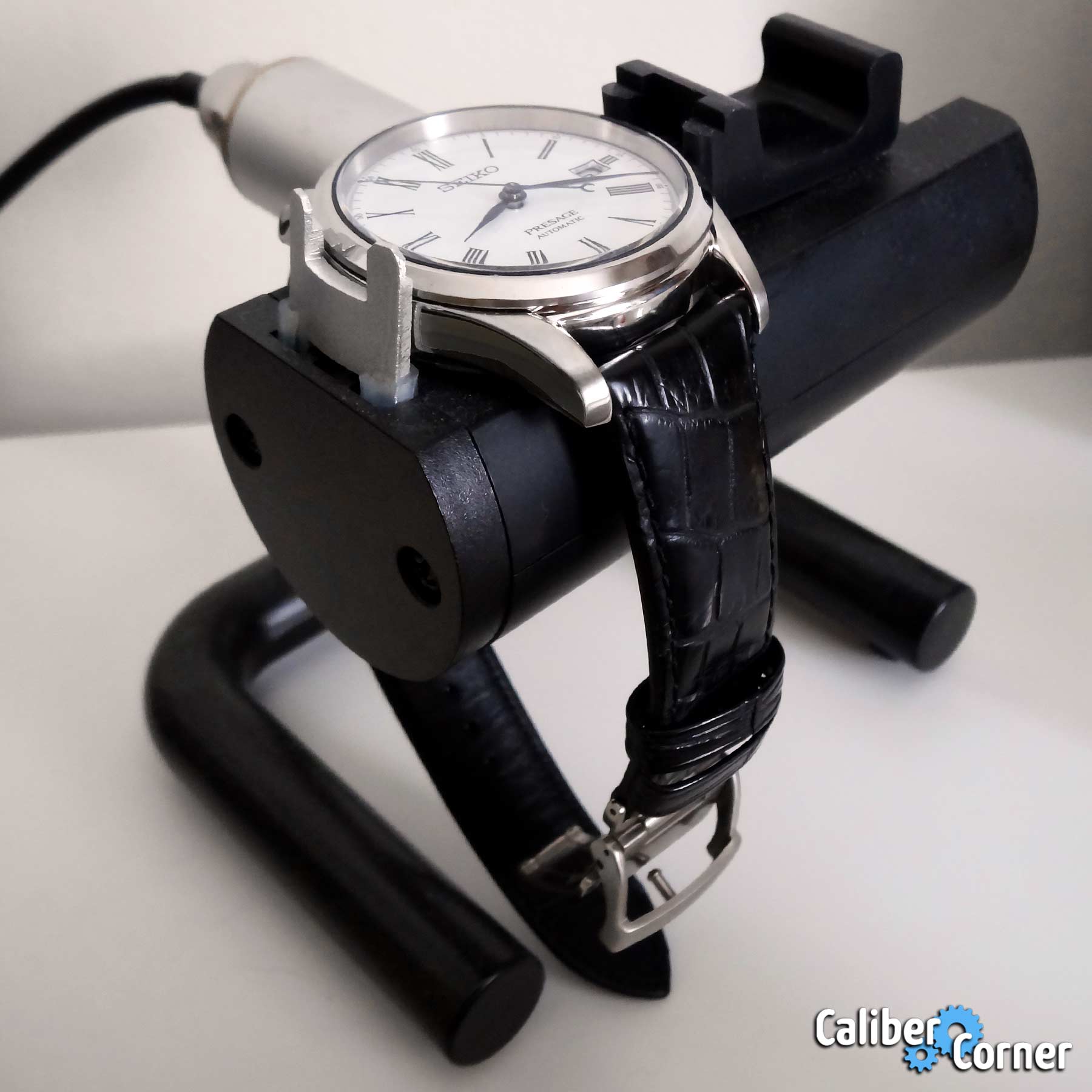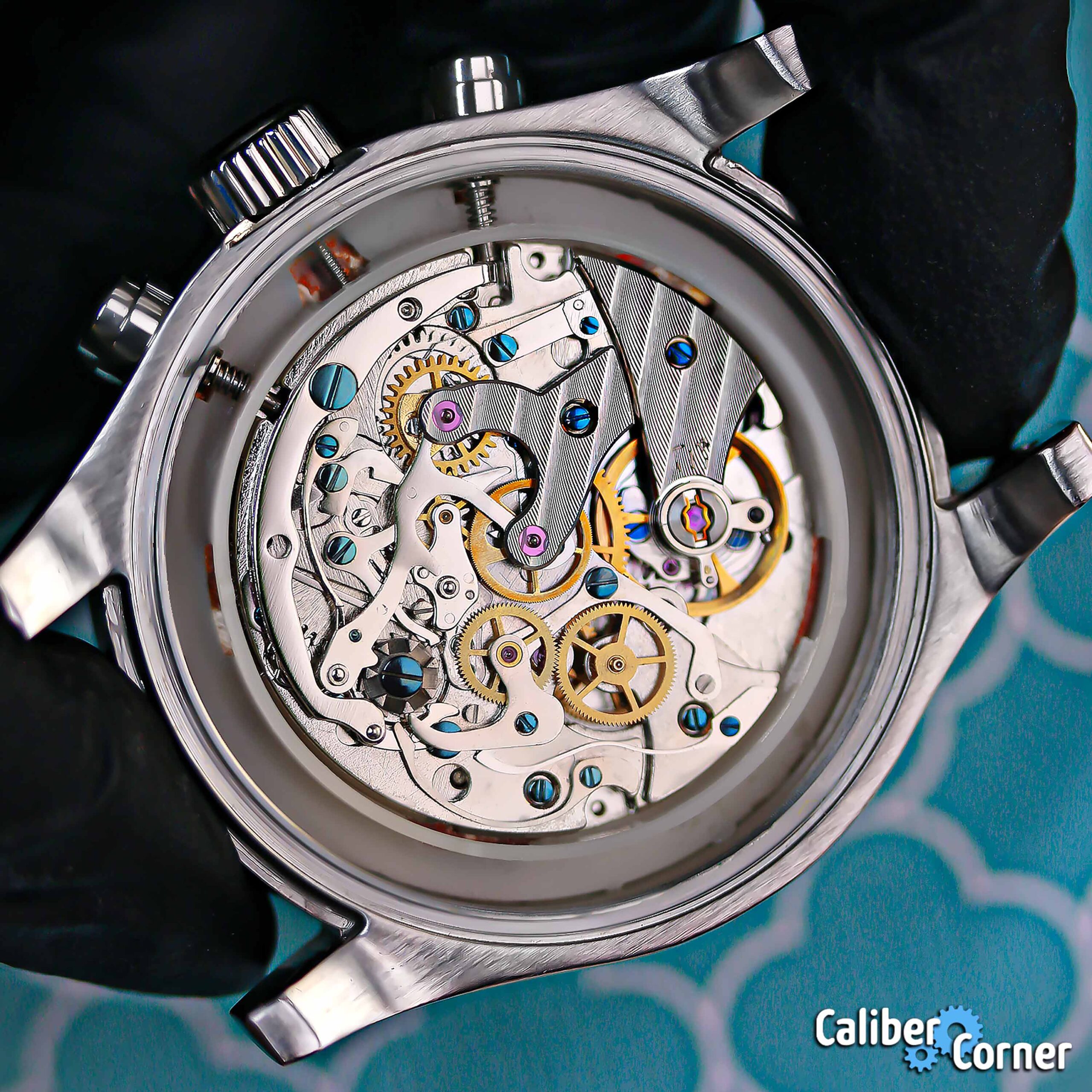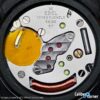Some of the topics covered in this caliber listing:
What does Adjusted in Six (6) Positions mean?
You may have seen Adjusted in Six (6) Positions stamped on your watch movements. This means that the movement was tested and adjusted (or regulated) in 6 positions. The reason why watches are tested in multiple positions is because the force of gravity plays a role in a watch’s accuracy. In other words, a gain or loss in energy transmission occurs depending on the position of the balance wheel.
Simply put, your mechanical timepiece performs differently (has different rates of accuracy) based how it is worn or placed on the table. That is why accuracy is calculated as an average of these positions.
The 6 positions for watch regulating:
- Dial up
- Dial down
- Crown up
- Crown down
- Crown right
- Crown left
While these are the common positions for regulation of a watch movement, sometimes a movement is also tested in half way crown up and half way crown down positions.
How many positions are COSC certified movements tested in?
Some watches are tested in all 6 positions, but a COSC chronometer is tested in 5.
What is an “unadjusted” watch?
You may also come across watch movements that are labeled as unadjusted. This means that the watch was produced without undergoing any testing and adjusting from the factory – tested in 0 positions.
Pocket watch positions are similar:
- Dial up
- Dial down
- Pendant up
- Pendant down
- Pendant right
- Pendant left
You may have seen pocket watches that have 8 or 9 adjustments as well. This means they are also including adjustments for Isochronism or temperature (hot/cold).
Timing Machine Positions:
Using a timegrapher such as the one pictured, you can secure the watch head on the microphone stand and rotate the watch in all of the various positions to see the difference of rate in each. Check out the watch timing machine below (purchasing from the link helps to support this site).


 network of watch sites
network of watch sites












Recent Comments
is this same as 5j22?
It may well be very real Gucci, and likely is! Gucci is a fashion company…
SNKA05K1-PO
5Y23-6149
Just purchased a Fromenteel Pendulum with this movement.
Hi franklin, the caliber listing was updated above to answer your question.
Were these movements ever made in Switzerland? I have a watch from 2007/2008 with this…